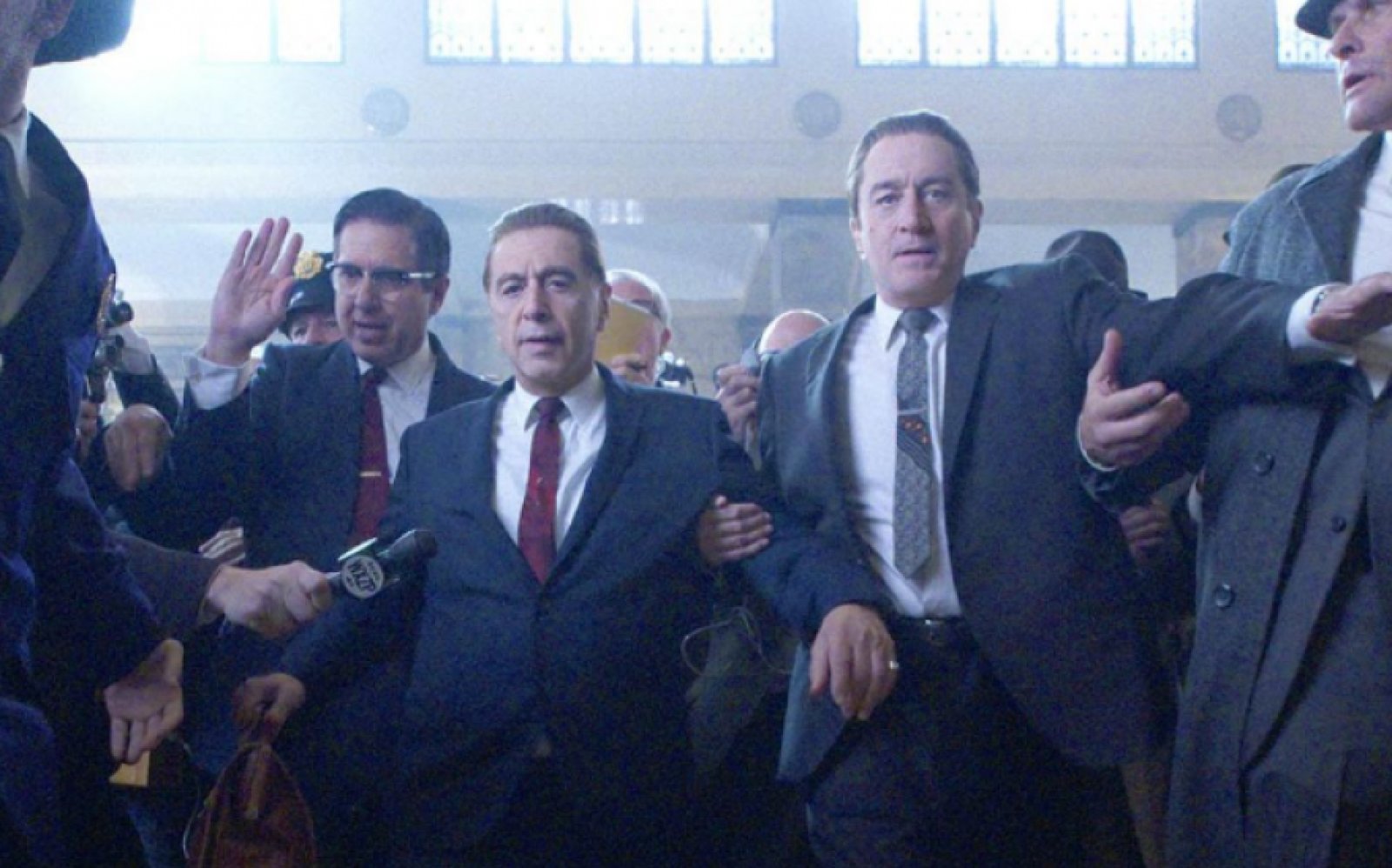Burn, Hollywood, Burn
A regular review by John Black
Last month Martin Scorsese drew the ire of millennials with a condemnation of Marvel movies, as mere ‘theme parks’ and ‘not cinema’. If anyone has earnt the right to opine on the art of film its Scorsese. He has made a cinematic career out of plumbing the depths of American criminality with great artistry and intelligence. And great entertainment too. His movies have their own theme park aspect, using troubled male characters to take the audience on a vicarious roller coaster ride through an underworld filled with spectacular violence, glamour and power. But in Scorsese’s pictures, the ticket to the theme park has a price.
In his latest, ‘The Irishman’ the price couldn’t be higher. It is a portrait of Frank ‘the Irishman’ Sheeran, a man who ‘painted houses’ (killed people) for the Bufalino crime family and later Jimmy Hoffa the famous union leader. Frank (if his confessional book, which this is based on, is to be believed) was a cross between Forest Gump and Woody Allen’s Zelig. He was connected to most of the key events of twentieth-century America; Kennedy’s election and assassination, The Bay of Pigs, Watergate, and Jimmy Hoffa’s rise, rule and mysterious (until now) demise. Sheeran also had the ability to adopt the manners and morality of those around him; he picked up enough Italian in a long army stint in Italy to make do in mafia circles. Played by Robert De Niro, Sheeran is a sponge, without agency, contracting out his morality, first in the Army (shooting prisoners under implicit instructions) and then doing hits following orders by the Bufalinos and Hoffa.
The cast is like a reunion of the Martin Scorsese repertory society; Al Pacino is a predictably loud and expansive Hoffa, Joe Pesci an unpredictably restrained Russell Bufalino and Harvey Keitel is the quietly menacing Angelo Bruno. Per previous Scorsese pics, the set and costume design is faultless. The script by Steven Zaillian lacks the quotable dialogue and big scenes of Scorsese’s other gangster epics. The closest it comes to a ‘funny how?’ or ‘Is this your pen?’ scene is when Hoffa and ‘Tony Pro’ bicker about punctuality and the question of how late to a meeting is too late. (‘Fifteen, ten’s not enough, you have to take traffic into account’, ‘Ten’ ‘How about twelve and a half?’). The whole tone is less stylized than Scorsese’s previous takes on mafia life, this a slower more meditative film befitting the framing of the story; Sheeran looking back on his life from a nursing home. Perhaps too, Scorsese (76) is reflecting on his own cinematic sins. The violence is less frequent and when it comes, it’s explosive, quick and nasty. And not cut to a Rolling Stones song. In Goodfellas, the viewer couldn’t help be seduced along with Henry Hill into the wise guy world, in The Irishman there’s precious little to envy. This is a low rent world of Philly steak houses and industrial estates not Las Vegas casinos. The audience is more likely to identify with the character of Sheeran’s daughter Peggy (Kiwi Anna Paquin) who is appalled by her father and his hoodlum pals. Some feminist critics have (surprise, surprise) complained about Peggy’s lack of dialogue missing the point that she is a silent witness to her father’s brutality just as we the audience are. She is the conscience of the film, and her two lines of dialogue are questions that should prick Sheeran’s conscience but don’t.
Scorsese loves his slow tracking shots and they bookend this film. In Goodfellas, his most famous shot took us into the Copacabana Club and the glamorous world of gangsters at play. In The Irishman the last shot takes us out of Sheeran’s sad little room at the nursing home, his confession just given to a priest. The priest asks him if he feels any remorse for his murders to which he replies he ‘didn’t know these people’. This is the ethic of the gangster. Connections, who’s in the gang or isn’t, is everything. Sheeran has no personal morality beyond following the herd, allowing him to kill as long as those around him approved. The same annihilation of personal conscience gave us Auschwitz and the Gulag. As the camera tracks out Sheeran asks the priest to leave the door ajar when he leaves. What is he hoping for? Salvation from a visitor? His daughters have disowned him and his gangster friends are all dead. A man defined by his social relationships left without any.
Or is he appealing to us the audience? To keep up our passive validation of his life?
Coppola’s The Godfather also ends with a door ajar, and Michael Corleone’s wife Kay watching his succession to the head of a powerful crime family. Perhaps Scorsese is commenting on all gangster films here. You enjoyed the ride, now see how it ends, the price paid for ‘the life’. But Scorsese’s camera slowly moves away leaving Sheeran behind.
Sorry Frank, you’re on your own.

